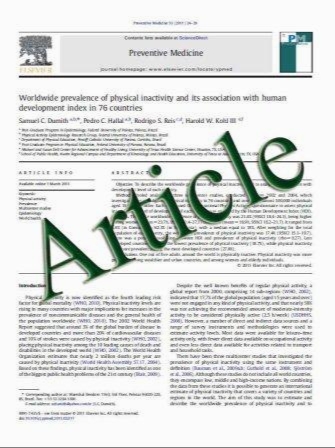Diagnostic examination performance by using microvascular leakage, cerebral blood volume, and blood flow derived from 3-T dynamic susceptibility-weighted contrast-enhanced perfusion MR imaging in the differentiation of glioblastoma multiforme and brain
- نوع فایل : کتاب
- زبان : انگلیسی
- مؤلف : Andrés Server & Tone E. Dّli Orheim & Bjّrn A. Graff & Roger Josefsen & Theresa Kumar & Per H. Nakstad
- چاپ و سال / کشور: 2011
Description
Introduction Conventional magnetic resonance (MR) imaging has limited capacity to differentiate between glioblastoma multiforme (GBM) and metastasis. The purposes of this study were: (1) to compare microvascular leakage (MVL), cerebral blood volume (CBV), and blood flow (CBF) in the distinction of metastasis from GBM using dynamic susceptibility-weighted contrast-enhanced perfusion MR imaging (DSC-MRI), and (2) to estimate the diagnostic accuracy of perfusion and permeability MR imaging. Methods A prospective study of 61 patients (40 GBMs and 21 metastases) was performed at 3 T using DSC-MRI. Normalized rCBV and rCBF from tumoral (rCBVt, rCBFt), peri-enhancing region (rCBVe, rCBFe), and by dividing the value in the tumor by the value in the peri-enhancing region (rCBVt/e, rCBFt/e), as well as MVL were calculated. Hemodynamic and histopathologic variables were analyzed statistically and Spearman/Pearson correlations. Receiver operating characteristic curve analysis was performed for each of the variables. Results The rCBVe, rCBFe, and MVL were significantly greater in GBMs compared with those of metastases. The optimal cutoff value for differentiating GBM from metastasis was 0.80 which implies a sensitivity of 95%, a specificity of 92%, a positive predictive value of 86%, and a negative predictive value of 97% for rCBVe ratio. We found a modest correlation between rCBVt and rCBFt ratios. Conclusion MVL measurements in GBMs are significantly higher than those in metastases. Statistically, both rCBVe, rCBVt/e and rCBFe, rCBFt/e were useful in differentiating between GBMs and metastases, supporting the hypothesis that perfusion MR imaging can detect infiltration of tumor cells in the peri-enhancing region.
Neuroradiology (2011) 53:319–330 DOI 10.1007/s00234-010-0740-3 Received: 29 April 2010 / Accepted: 23 June 2010 / Published online: 13 July 2010


